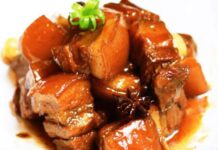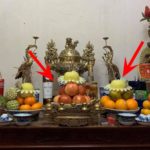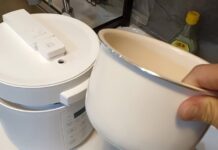Ancestor worship is a beautiful cultural tradition of the Vietnamese people, both in the past and present. Ancestor altars are an indispensable part of every family, regardless of wealth or social status.
For a long time, ancestor worship has become a custom, a moral standard, and a principle of being a good person for the Vietnamese; at the same time, it is an important part of the spiritual life of the Vietnamese people. The Vietnamese people value rituals, filial piety towards parents, and reverence for their ancestors and origins.
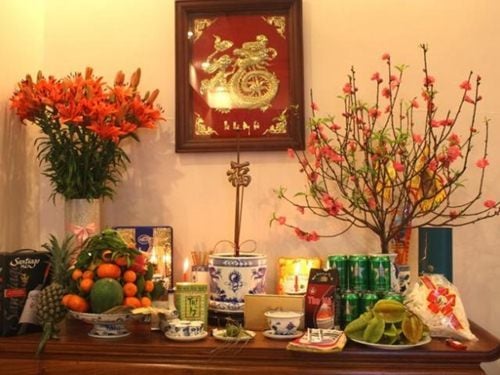
On the ancestor altar, in the middle, there is the incense bowl (symbolizing the spiritual essence) and on the incense bowl, there is a vertical incense stick holder (symbolizing the cosmic axis); in the two outside corners, there are always two candles (or oil lamps) symbolizing the Sun on the left and the Moon on the right. When communicating with the ancestors (sometimes praying, sometimes repenting…), people often light candles (oil lamps) and incense. All prayers are sent to the ancestors through the smoke of the incense.

On the altar, the incense bowl is located in the center and is also the most important item. However, not everyone knows and does it correctly.
According to researcher Nguyen Manh Cuong (former staff of the Institute of Buddhist Studies), some people bring soil or sand from other places to scoop incense with the belief that white sand represents purity. According to the expert, this is not quite appropriate. Because the climate in Vietnam is humid, especially in the North, sand becomes damp and hardens over time, making it difficult to insert incense sticks.
Usually, incense bowls should be filled with clean ash, burned from clean straw or husk, carefully filtered to remove impurities, to ensure solemnity and purity. The owners should not put sand in the incense bowl. Folk belief says that doing so will bring trouble and unfortunate events to the family in that year.
When to Change Incense Ash?
The task of changing incense ash and trimming incense sticks is usually done around the 23rd of the last month of the lunar year (the Kitchen Gods Day) until the night before the Lunar New Year’s Eve. One of the explanations as to why this time of the year is chosen to change incense ash is that the Kitchen Gods will leave the house at this time, so changing incense ash will be more convenient, without offending them. At the same time, when the Kitchen Gods return, they will see a clean and fresh incense altar. They will protect and bless the whole family.
However, many families doing business often light incense, causing the incense bowl to fill up quickly. Therefore, these families can change incense ash more frequently.
Readers should also note that each place, each region has different customs regarding the timing of changing incense ash at the end of the year, so we should not impose this time on them.
According to experts, we should still change incense ash near the end of the year to avoid affecting the incense bowl and having negative effects on the family’s destiny.
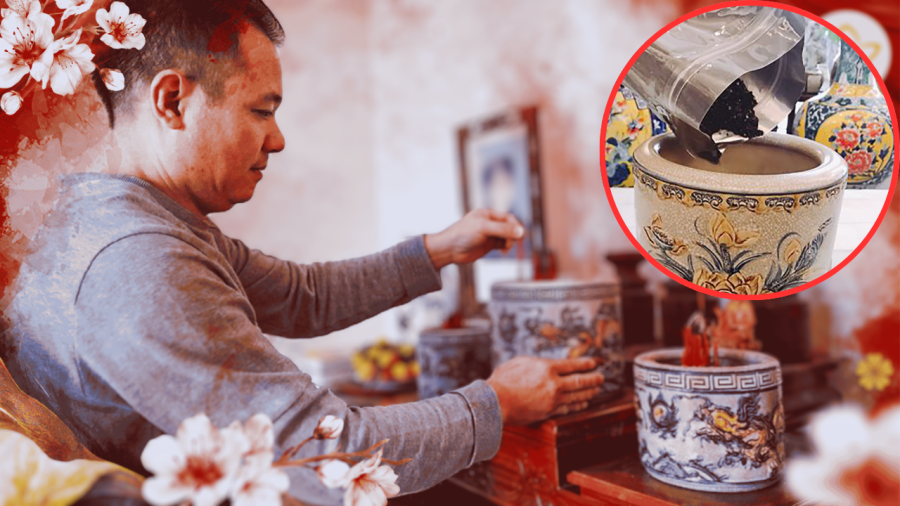
“Standard” Process of Changing Incense Ash
Step 1: Prepare new ash
According to folk belief, the most suitable type of ash is rice husk ash. You can obtain new ash by getting fresh rice husk, air-drying it in a clean place, and then burning it. Or you can buy ash from stores that sell worshiping items.
Step 2: Recite the worshiping text
The custom of reciting worshiping text has existed for a long time. The purpose of this is to report to the spirits, ancestors about changing incense ash.
Owners need to prepare worshiping items and recite the worshiping text. The person performing the ritual of changing incense ash must wash their hands clean. Prepare neat clothes for the ceremony.
Step 3: Change incense ash
The steps to prepare incense ash include the following:
Take crushed ginger mixed with white alcohol. Dip a clean cloth into this mixture and wipe the incense bowl, then let it dry.
Put the old ash and incense sticks on a piece of cloth. Then, put the new ash into the incense bowl and press tightly to ensure that the incense sticks won’t lean.
You should fill about half of the incense bowl with new ash because if there is too much, the incense bowl will fill up quickly. On the other hand, if there’s too little ash, inserting incense sticks will be uncertain.
After changing incense ash, you can choose 3, 5, or 7 incense sticks, group them together, and insert them into the incense bowl.
Finally, gently place the incense bowl back to its original position on the altar. Avoid moving the incense bowl as it will affect the destiny of the owner.
Step 4: Clean the altar and make offerings
After changing incense ash, the last step is to clean the altar and make offerings to the spirits and ancestors. Families can prepare simple offerings such as fruits, flowers, or special offerings for the altar. When changing incense ash for the first time, burn 3 incense sticks in each incense bowl, and in subsequent times, only 1 incense stick is enough. If there are old incense sticks, you can reinsert 3 incense sticks in each incense bowl.
Important note for homeowners when changing incense ash at the end of the year
Many people believe that changing incense ash must be done by the male head of the family or a higher-ranking person. In fact, anyone in the family can do it. The important thing is that the person performing the ritual does it sincerely and with clean hands and clothes.
When changing incense ash, do not pour it all at once, but use a spoon to scoop a little ash at a time.
The old ash and incense sticks should be released into the river.
As mentioned above, new ash for changing incense ash at the end of the year must be burned from fresh rice husk.
7 Appropriate and Practical Lunar New Year Gifts for Teachers
With Lunar New Year just around the corner, what better way to express your appreciation to your teachers than with a special gift? Choosing the right gift can be tricky, so let Dien May XANH help you out! Here, we have hand-picked 7 luxurious yet suitable gifts that you can give to your teachers this Tet. Check them out now!
Uncover the secret Feng Shui master’s tips for decluttering your home to invite wealth and abundance in the Year of the Ox 2021.
With the Lunar New Year approaching, every family is busy shopping and tidying up their homes to welcome the new year with a fresh start. However, according to Feng Shui beliefs, it is important to clean the house at the end of the year in a way that aligns with good Feng Shui principles and avoids any Feng Shui taboos that could potentially bring negative energy and affect the overall luck of the family in the new year. This knowledge is not widely known to everyone.















